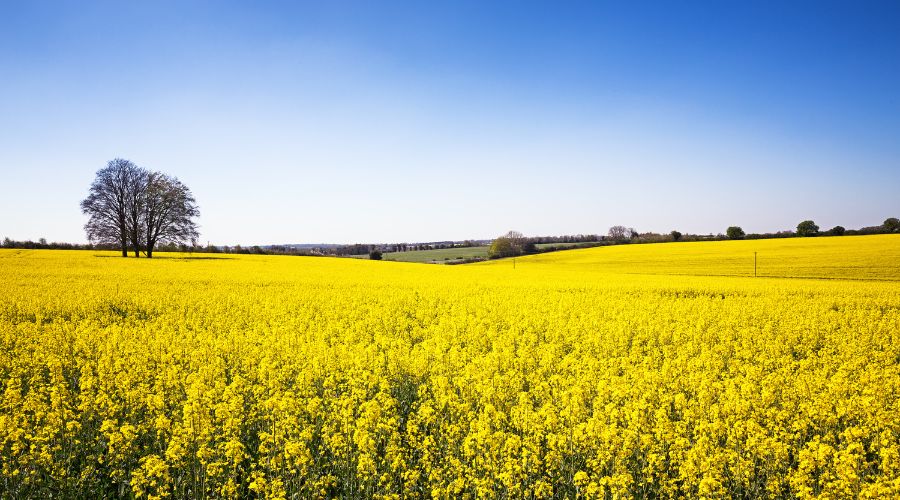Could UK have the lowest oilseed rape planted area since the 80s?
22nd November 2024
AHDB’s early bird survey predicts an increase in the UK wheat area for harvest 2025 of 5.4%, however, it will still remain below the 2019 to 2023 average. The country can also see the lowest oilseed rape planted area for 42 years.

Winter and spring barley, as well as oilseed rape (OSR) areas, are seen to be falling. A 17% decline in the oilseed rape planted area is forecast for next year. This could be its lowest area in the UK for 42 years.
The final area could be even lower depending on damage from pests, particularly cabbage stem flea beetles, and weather conditions between now and harvest, AHDB’s survey predicts.
The area of oats is projected to rise by a modest 3.5%. At 189 Kha, the 2025 projected area would be slightly above the 2019 to 2023 average but below 2021’s 200 Kha.
The winter barley area is estimated to have fallen by just under 1%, potentially limited by the wet conditions in England in September. Spring barley looks like it will fall by 13%, after rising sharply in 2024.
The spring barley projection at 704 Kha would still be above 2022 and 2023 levels, but with the winter barley area edging lower again, the falls in spring barley would mean the smallest UK barley area since 2014 at 1,084 Kha.
If this area is confirmed and without above-average yields in 2025, the UK barley production could fall below 2024’s provisional 7.2 Mt crop.
A mixed picture
Helen Plant, AHDB’s senior analyst, cereals & oilseeds, said: “The first insight into 2025 cropping patterns shows a mixed picture.
“While winter cropping has historically usually strongly rebounded the year after a wet autumn, for example, in 2021, that doesn’t seem to be the case for harvest 2025.
“The challenging weather in some areas, plus the fallout from the 2024 harvest on profitability, seems to have limited the rebounds. This places extra focus on yield potential. Industry will need to monitor crop conditions closely through the growing season.”
The survey also points to a further rise of 51% in uncropped arable land from 2024’s already high level.
However, it is unclear if this reflects decisions still to be made or land intended for agri-environmental schemes in England, particularly with the largest rises reported for Northern England.
Data from Defra shows that between July and October only a further 20 Kha were entered into Sustainable Farming Incentive (SFI) options that take land out of production across all farm types.
Read more arable news.


